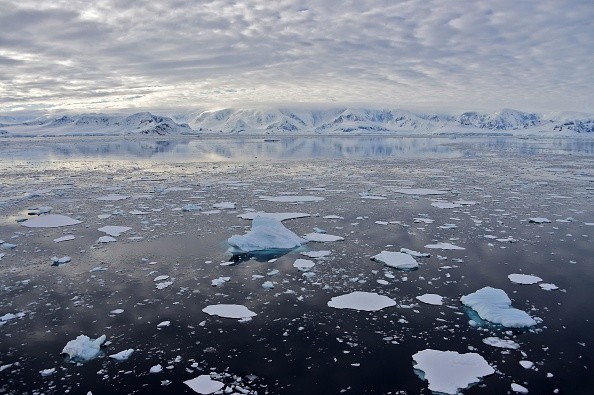Scientists unveiled new observations about the seasonal change in the Antarctic ice sheet movement.
Many reports have raised concerns over Antarctic ice melting, especially the warming of water underneath. Scientists and environmentalists associated the unexpected melting of ice with climate change or environmental pollution.
The melting of ice can result in the rise of sea level, which scientists said the impact could lead to global concerns.
On the other hand, new research observing the antarctic ice sheet revealed seasonal change observations in the movement.
According to the study, researchers observed seasonal movements in the land-based ice flow in the George VI Ice Shelf.
Seasonal Change Movement
The study's first author Karla Boxall explained that there was a lack of data collected over the continent in the past, showing that the researchers had no comparable data to investigate the changes over Antarctica recently. Boxall is also from Cambridge's Scott Polar Research Institute (SPRI).
Boxall said that the results showed that there might be similar seasonal variability in other sites of Antarctica, including West Antarctica, Pine Island, and Thwaites glaciers, that could pose global sea-level rise.
Furthermore, the study results were reported to The Cryosphere journal and are available to read in ScienceDaily. The study's researchers were from the University of Cambridge and the Austrian engineering company ENVEO.
The researchers employed the Copernicus/European Space Agency Sentinel-1 satellites to observe the findings. According to the European Space Agency (ESA), the Copernicus Sentinel 1 is a two-satellite constellation used for the advanced radar instrument producing imagery of the surface of the Earth.
Causes of Seasonal Change

Using advanced imagery, the researchers, for the first time, detected seasonal changes, showing on the land ice and flowing to Antarctica's ice shelves, according to the research.
Co-author Professor Ian Willis said that the first-time seasonal signal in the Antarctic Ice Sheet raised questions about the presence and causes of the seasonal change in Antarctica.
In addition, Dr. Thomas Nagler, ENVEO's CEO, explained that the Sentinel-1 radar imagery helped unveil the seasonal ice-flow change. The satellites assisted in monitoring the year-round and all-weather conditions there.
Researchers added that summer could speed up the ice flow in the Artic and Alpine regions. They assumed that the Antarctica ice could not have the same seasonal movements.
The research emphasized that it is still uncertain about the possible cause of seasonal change.
The cause could be the surface meltwater or the warming of ocean water which melts the ice underneath that, allowing the glaciers to move faster, according to the researchers.
Ultimately, co-author Dr. Frazer Christie and also from SPRI explained there is a need for ocean and surface measurements to determine the causes or occurrence of seasonal change.
According to the study, the initiative was supported by the following:
- European Space Agency
- Prince Albert II of Monaco Foundation
- Natural Environment Research Council (NERC)
- UK Research & Innovation (UKRI)
Ocean acidification
Research on the link between fast-melting Arctic ice and ocean acidification showed that it could threaten marine ecosystems, including marine animals, plants, and coral reefs.
Related Article : Why the Link Between Fast-Melting Arctic Ice and Ocean Acidification Could Threaten Marine Life [Research]
For more similar, don't forget to follow Nature World News.
© 2025 NatureWorldNews.com All rights reserved. Do not reproduce without permission.





